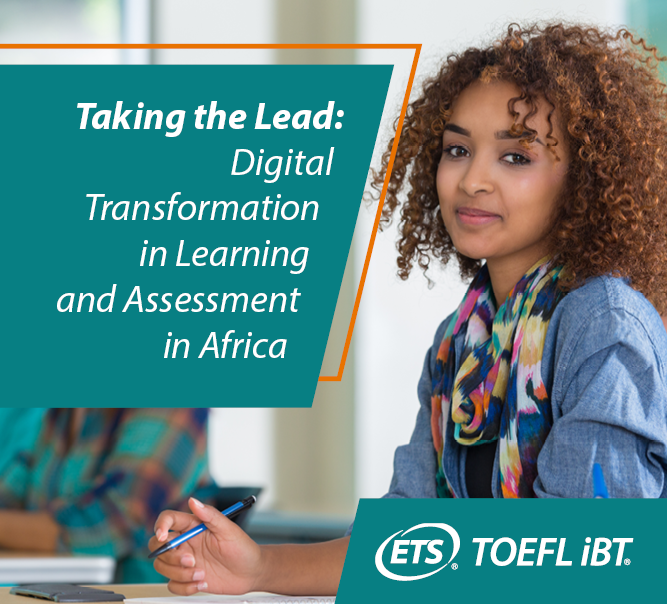
The Covid-19 pandemic has had a profound impact on the education system globally, and Africa is no exception. In response to school closures and lockdowns, many African countries have accelerated their efforts to transition to digital learning. One significant way the pandemic has pushed Africa towards digital transformation in learning and assessment is by highlighting the need for remote assessment options. With traditional in-person assessments no longer feasible due to Covid-related restrictions, many countries have turned to digital assessments that can be taken remotely. This has led to the development and adoption of online assessment platforms which have enabled students to continue their learning and assessment at a distance.
The overall objective of the Digital Transformation Strategy for Africa (2020-2030) as stated by the African Union is as follows:
“To harness digital technologies and innovation to transform African societies and economies to promote Africa’s integration, generate inclusive economic growth, stimulate job creation, break the digital divide, and eradicate poverty for the continent’s socio-economic development and ensure Africa’s ownership of modern tools of digital management.”
The pandemic has only accelerated the adoption of digital technologies in the education sector, including language assessment. To support this adoption, many African countries have had to invest in digital infrastructure, such as providing students with laptops or tablets and ensuring they have access to the internet. This investment in digital infrastructure has laid the groundwork for the broader adoption of digital technologies in language assessment beyond the pandemic.
Artificial Intelligence in Learning and Assessment
The use of Artificial Intelligence (AI) has generated novel learning and assessment solutions that can be applied in various educational contexts, particularly in this digital age. In the domain of language assessment, AI has facilitated the delivery of high-stakes standardized assessments, leveraging the internet.
In the context of language assessment, ETS a reputable and globally-established testing provider, adopted the combination of live remote proctoring and AI capabilities to ensure test security and uphold score integrity. This is specifically the case with the TOEFL iBT® Home Edition. The test ensures that regardless of where students come from, who they are, or what their background may be, the TOEFL iBT test provides the same unbiased assessment of their ability to communicate in English for academic purposes. This is done through a combination of human and automated scoring for evaluating speaking and writing skills. By combining AI and human raters to enhance test-taker assessment ETS ensures the highest standards of validity, reliability, and test security.
The TOEFL iBT Home Edition has helped millions of students from all over the world, including Africa, since the pandemic began. With many test centres closed or running at reduced capacity, the Home Edition has provided a convenient and safe way for students to take the TOEFL test in their own homes. This has been particularly helpful for those living in remote areas or with limited access to transportation, as it eliminates the need to travel to a testing centre. The Home Edition uses the same test format and scoring system as the TOEFL iBT delivered at test centres, requiring a secure internet connection, all the while using a combination of advanced security measures, live proctoring, and AI technology to maintain the security and integrity of the test.
Combining AI and Human Scoring
To further illustrate the use of technology in language assessment, let us look specifically at the TOEFL iBT Speaking section. In other major proficiency tests of English, students must communicate directly with an examiner for the speaking section test. Since the TOEFL test is completely computer-based, students do not interact directly with the examiners, as this can provide a source of bias. Instead, their speaking responses are recorded and sent to a central location to be rated. In this way, only the test taker’s performance in academic English is taken into consideration—nothing else. This is an effective way to prevent the halo effect, or the unfair evaluation of students based on their past performance, appearance, or behaviour, rather than their actual abilities and potential.
The test uses the e-rater® automated scoring engine and SpeechRater® advanced speech recognition service in a limited and responsible way for scoring the responses. In this way, responses are scored by a combination of automated AI scoring and multiple, highly trained human raters to offer a complete and correct picture of your ability, minimize the rater bias that can occur with face-to-face interviews, and ensure consistency and the highest quality. Finally, each test is scored by collecting evidence from multiple sources and any discrepancies are resolved by human raters who are trained and monitored to ensure consistency and fairness.
As already mentioned, to ensure fair, accurate and valid scores, ETS employs a combination of AI and human raters. All 4 questions in the TOEFL iBT Speaking test are individually scored by raters independently and anonymously. This unique scoring design is to further minimizes individual rater bias, once again ensuring the highest score reliability. A different rater assigns scores for every test question in a combined evaluation of content, meaning and language use to provide unmatched accuracy and reliability. What is more, rigorous training is needed to become a test rater and calibration tests are taken every day to make sure they are doing their job correctly.
In addition to the strict quality control measures in place to ensure that the scoring process is accurate and reliable, the scoring criteria for the TOEFL test are publicly available. Scoring rubrics are provided online to ensure transparency and fairness, and test-takers can request a re-scoring of their test if they feel that there has been an error in the scoring process.
Supporting Students
Another benefit of digital transformation is that ETS provides a range of free online resources that are designed to help students prepare for the TOEFL test. One example is the free online course, “TOEFL Test Preparation: The Insider’s Guide”, which is designed to be accessible to learners worldwide. It is a good example of how to push for fairness in education by providing free or low-cost access to high-quality educational content, from universities or other institutions. Try the free TOEFL Test Preparation course here and click here for other free TOEFL resources.

Key takeaways
The digital transformation in standardized assessment and teaching academic English skills has great potential to help learners in Africa, offering increased access to high-quality educational content and improving fairness in education. By using digital technologies such as artificial intelligence and automated scoring, language assessment can become more accessible, efficient, and accurate, allowing for better learning experiences and catering to the needs of diverse learners.
In addition, digital transformation can help bridge the digital divide in Africa by providing access to educational resources and opportunities to students who may not have had them otherwise. This can promote equity in education and contribute to the development of a more skilled and educated workforce on the continent.


















